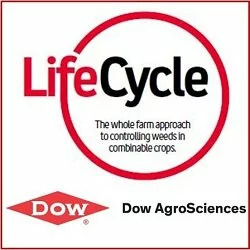Oram & Sons – Harvest Update
Oram and Sons is a family farming business on the north side of the Pewsey Vale in Wiltshire. Six partners in the business include three generations, though my Grandfather is less involved these days than he used to be. The daily running of the farm is down to my father, Philip, my uncle, Richard, cousins Nick and James and myself. In total we farm almost 1,000 Ha., including around 200 Ha. share-farmed plus bits and pieces of rented land. We have a good range of soils over a 15 mile radius, from sand to Pewsey Vale clay and flint.
We milk 180 cows three times a day, employing a herdsman and a relief milker, and we grow 650 Ha. of combinable crops plus forage maize and silage for the cows. We have some downland which provides useful summer grazing for the in-calf heifers and make big round bale silage for winter forage on any sufficiently flat grassland. Our arable rotation is normally two wheats and then a break crop of OSR, grass or maize. We utilise 2-year leys of Italian Ryegrass to enhance our grass yield as well as providing a rotational break and the opportunity to move it around, which also allows us to get slurry on to more of the ground.
Needless to say we are flat out with harvest at present, weather permitting, and of course the cows still need to be milked. Like many others we had problems with establishment of Winter OSR in the autumn: we normally aim for 160 Ha. of Winter Rape but this year ended up re-drilling 40 Ha. of it in the spring. Some of the Winter Wheat planted in December on the frost also failed and some of that was left fallow, because the type of ground was not worth a spring crop. We juggled a bit and put some maize onto the sand and some extra Spring Barley and ended up with 400 Ha. of Winter Wheat.
Our rape this year was DK Camelot, PR46 W21 and Vision and, considering the conditions, we have been pleased with yields of 4 tonne to the hectare, though a bit below average for us. The Pioneer looked slightly better from the combine but there were no exceptional pieces. In the Vision we took the decision to leave a couple of green headlands as it was more important to get on with other jobs. Some farmers sprayed off the headlands earlier to avoid the mess but we waited to see what would happen.
Our Propino Spring Barley (40 Ha.) was drilled on a new piece of fairly poor land so we were not sure what to expect from that. It wasn’t a great yield at about 7 to 7.5 tonnes per Ha., compared to what other people are reporting, but considering that it was our first year on the land we are reasonably happy with that. We put a lot of lime on it but couldn’t get enough farmyard manure up there. It should do better next year as we have now had time to haul the FYM in preparation for spreading.
We haven’t cut much of the 400 Ha. of Winter Wheat yet but are very pleased with the JB Diego first wheats which have yielded over 10 tonnes per hectare. Those were planted on time and in good seed beds in the autumn so did well. Our second wheats, Solstice, were drilled late and the seed beds were not ideal, so we are quite pleased with the 8 to 8.5 tonnes we have off those so far.
With about 350 Ha. still to cut, including 40 Ha. of Spring OSR, it does feel very late to have so much left to do. Normally we would have knocked a fair hole in most of that by now. One of the main concerns of course is getting the rape in but we baled behind the combine and cleared the straw off the Spring Barley yesterday and are dung spreading there today so should be able to drill by the weekend. We plan to sow DK Camelot using the Väderstad TopDown with BioDrill again. It goes straight into the stubble with discs, tines and a roller and it blows the seed in front of the roller so one pass from stubble to drilling, which saves us a lot of work and a lot of diesel. We have had very good results from it for three years now.
We probably need about 10 fine days to see harvest completed now before we get into the maize in September.








 Saving...
Saving...